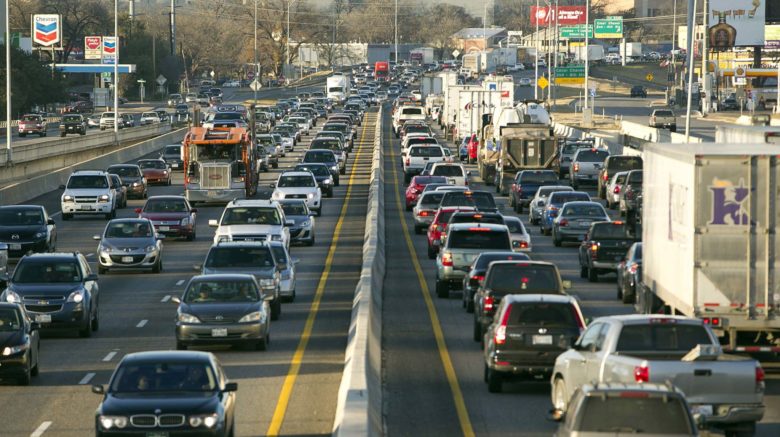Hello Mayor Watson and Council Members,
Thanks so much for your consideration of Item 45, seeking to improve the climate emissions reduction and air quality improvement strategies of the plan to fix I-35 and rebuild the historic urban street grid.
Farm&City is a tiny nonprofit and we don’t have funding to do this particular work, so I’m sorry to report that we tried to make a report to help you with more analysis of the potential climate impacts of I-35. That should be forthcoming.
There are two major points we sought to explore that I’m not sure others have presented:
1. We believe the proposal to fix I-35 includes substantial car priority lane expansions aside from the addition of managed lanes, but TxDOT seems to have failed to explain the basic extent of the frontage, main lane, and auxiliary lane expansions included in their proposal. We have been doing this exercise by hand and should have solid estimates next week, which will allow a more meaningful analysis of the expected induced driving impacts on increasing climate emissions.
2. Much of the discussion of induced demand, including all of the TxDOT analysis in the FEIS, misses the main point of how freeway expansion will marginally increase the percent of regional residents living in car dependent places — and thus forced to drive more than most Americans. TxDOT’s refusal to use an equitable scenario planning process with alternative reasonable future growth forecasts renders their “No Build” analysis meaningless in the climate emissions, air quality, and traffic modeling analysis. We have an extensive report on this and have consistently been raising the alarm bells about the meaninglessness of our regional travel modeling system explained in this report:
https://downloads.regulations.gov/DOT-OST-2021-0036-0023/attachment_1.pdf
Finally, we believe there remain significant improvements to the City and TxDOT’s approach. We will publish a report on that soon, but here are the rough draft of the main points:
1. No frontage lanes in the project
Instead use boulevard treatment, brought together into a single boulevard where possible,
but use two way city streets otherwise. Design for speeds that match connecting city streets.
TxDOT should rethink design of all non-controlled access elements of the project, starting
with City of Austin design standards as the default, and making exceptions only where
completely necessary to satisfy Federal and State requirements.
2. Use a tax increment financing mechanism to capture the value of caps and stitches, safe streets, and restoration from the bleak freeway / frontage setting it is today. Set up any TIF with equitable representation from people who live, work, or otherwise frequent the areas, either in the past, present or future, along with broader representation from public and business interests. Set up any TIF with a portion dedicated to affordable housing units included in future equitable transit-oriented developments.
3. If the city will cooperate with TxDOT fully on a final agreed plan for I-35, TxDOT and the governor should cooperate fully with the city, Cap Metro, and ATP on implementing Project Connect including the good designs TxDOT has already included in the plan but also ensuring that TxDOT will cooperate and support rebuilding North Lamar all the way to Tech Ridge as a safe, multimodal boulevard with light rail, support rethinking and reconnecting the area around North Lamar and 183 as a dense, mixed-use, mixed-income development on all sides.
4. Optimize the potential for reconnecting where the freeway previously destroyed traditional Texas urbanism. Create a Central Park on a cap at 11th and 12th that honors African Americans in the region of the past, present and future, co-created by community members representing African Americans of Austin. Use one or two story urbanism and complete streets designs for all stitches, such that there is a seamless inclusive, safe pedestrian experience from 5 blocks east of the freeway to west of the freeway at all crossings. Use 5 story mixed-use, mixed-income urbanism on the caps from 4th to 8th street joining the context to the East and West into a seamless equitable transit-oriented development area. Fully support the vision for a dense, mixed-use, mixed-income, walkable equitable transit-oriented development at the intersection of the freeway and 38th. Fully cap as far north and south as possible. Allow as much building on caps to line streets as possible. Consolidate what is proposed as frontage lanes into a boulevard treatment cantilevered over the West side of the freeway.
5. The Austin region should not wait until our air is so bad that the Federal government imposes restrictions before we develop a meaningful regional approach to improving our air quality and reducing carbon emissions. CAMPO should act now as if we were in non-attainment. We need a coherent regional climate strategy. We need to reform regional governance to allow for the goals and desires of the people of the region to be meaningfully incorporated into decision making on transportation projects.
Thanks for your consideration of these issues and please vote yes on 45.
Sincerely,
Farm&City
